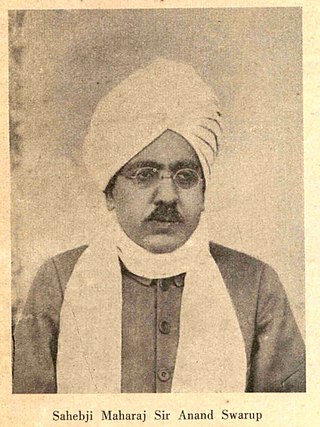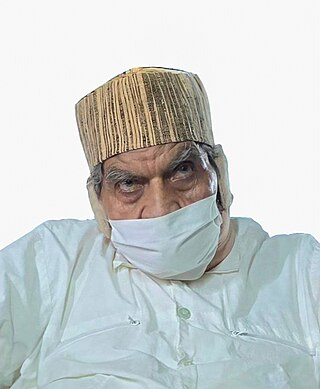David Christopher Lane is a professor of philosophy and sociology at Mt. San Antonio College, in Walnut, California. He is notable for his book The Making of a Spiritual Movement: The Untold Story of Paul Twitchell and Eckankar which exposed the origins of Eckankar and demonstrated the plagiarism of its founder, Paul Twitchell. He is also notable for introducing to a wider audience the teachings of Baba Faqir Chand, the Indian exponent of Surat Shabd Yoga from Hoshiapur in the book, The Unknowing Sage: The Life and Work of Baba Faqir Chand. Lane founded the journal, Understanding Cults and Spiritual Movements in the 1980s which featured critical studies of John-Roger Hinkins and Movement of Spiritual Inner Awareness, Adi Da, and Sathya Sai Baba. His most recent book, The Sound Current Tradition (2022) was on Nada Yoga and Surat Shabd Yoga in new religions and was published by Cambridge University Press. He also co-authored an annotated bibliography on the Radhasoami Tradition with Mark Juergensmeyer for Oxford University Press (2018).
Contemporary Sant Mat Movements, mostly among the Radha Soami tradition, are esoteric philosophy movements active in the United States, Europe, Australia, Latin America, and especially India. These movements assert that Sant Mat shares a lineage with Sikhism and contains elements of thought found in Hinduism, such as karma and reincarnation. They further assert that Sant Mat also contains elements found in Sufism and has inspired and influenced a number of religious groups and organizations. They refer to this spiritual path as the "Science of the Soul" or 'Sant Mat', meaning 'teachings of the saints'. More recently it has been described as "The Way of Life" or "Living the Life of Soul". It incorporates a practical yoga system known as Surat Shabd Yoga.
Surat Shabd Simran is a type of spiritual meditation in the Sant Mat tradition.

Radha Soami is a spiritual tradition or faith founded by Shiv Dayal Singh in 1861 on Basant Panchami Day in Agra, India.

Shiv Dayal Singh, known by the honorific "Param Purush Puran Dhani Huzur Soami Ji Maharaj" by his disciples and devotees, was an Indian spiritual guru and founder of Radha Soami, a 19th-century spiritual sect.

Sawan Singh, also known as The Great Master or Bade Maharaj ji, was an Indian Saint or Sant. He was the second spiritual head of Radha Soami Satsang Beas (RSSB) from the death of Jaimal Singh in 1903 until his own death on 2 April 1948.

Sir Anand Swarup, also known as Param Guru Huzur Sahabji Maharaj, was the founder of Dayalbagh. He was the fifth revered leader, or Sant Satguru, of the Dayalbagh branch of the Radha Soami sect, who succeeded Sarkar Sahab in 1913. He also laid the foundation of Radha Soami Educational Institute, a co-educational middle school which opened in 1917 and later expanded and developed as Dayalbagh Educational Institute. He wrote many holy books on the Radha Soami sect, explaining the concepts of Surat Shabd Yoga and objectives of Radha Soami in general.
Sant Mat was a spiritual movement on the Indian subcontinent during the 13th–17th centuries CE. The name literally means "teachings of sants", i.e. mystic Hindu saints. Through association and seeking truth by following sants and their teachings, a movement was formed. Theologically, the teachings are distinguished by inward, loving devotion by the individual soul (atma) to the Divine Principal God (Parmatma). Socially, they are mostly ascetics except few householders. Sant Mat is not to be confused with the 19th-century Radha Soami, also known as contemporary "Sant Mat movement".
Julian P. Johnson (1867–1939) was an American surgeon and author of several books on Eastern spirituality. He spent much of 1932 to 1939 in India, was associated with the Radha Soami Satsang Beas spiritual society and Surat Shabd Yoga, and wrote five books as a result of his experiences.

Jagat Singh (1884–1951) was an Indian spiritual leader and the head of Radha Soami Satsang Beas. He served as the guru for Beas Dera for three years, until his death in 1951 at the age of 67. He worked as a college chemistry professor at an Agricultural College and was honoured for his service by the British as Sardar Bahadur. After retirement he was chosen by his spiritual master to be his successor, becoming the third spiritual head of Radha Soami Satsang Beas. Jagat Singh assigned the duties of his successor and guru to his initiate Charan Singh.

Salig Ram, successor of Shiv Dayal Singh second Sant Satguru of the Radhasoami Satsang popularly known by the honorific "Huzur Maharaj" and by the government-conferred title "Rai Bahadur," was born in Peepal Mandi, Agra, on 14 March 1829. He served as chief inspector of post offices in British India, and, in 1881, was Postmaster-General of the North-Western Provinces, based in Allahabad. He was the first Indian to hold the position.
This is a list of gurus who gave teachings about Shabda, the Path of Sound.

Prem Saran Satsangi is the current sant satguru of Radha Soami Sect, Dayalbagh or Radhasoami Satsang Dayalbagh who succeeded Param Guru Lal Sahab, seventh Sant Satguru in 2003.

Radhasoami Satsang Sabha also written as Ra Dha Sva Aa Mi Satsang Sabha is the Chief Working Committee of Radhasoami Satsang Dayalbagh. Sabha was founded in 1910 and came to be registered under the Charitable Societies Registration Act. The teachings of Radha Soami sect are based on the spiritual teachings of Shiv Dayal Singh. The Present spiritual head of Radha Soami Satsang Sabha is Prem Saran Satsangi who is also the eighth and current sant satguru of Radhasoami Satsang Dayalbagh and a system scientist and physicist.

Gurcharan Das Mehta, also known as Param Guru Mehta Ji Maharaj, was the Sixth Revered Sant Satguru of the Radhasoami Faith or Radha Soami Satsang Dayalbagh.

Makund Bihari Lal Sahab popularly known as "Param Guru Huzur Dr. M.B. Lal Sahab" was the Seventh Revered Sant Satguru of the Radha Soami sect or Radhasoami Satsang Dayalbagh, living at and presiding over Dayalbagh in Agra.
Satsang is an audience with a Satguru for religious instruction.

Kamta Prasad Sinha, commonly known as Param Guru Sarkar Sahab, was the fourth revered sant satguru of the Radhasoami faith. He was the Spiritual Guru and Head of Radhasoami Satsang, from 1907 to 1913.

Maharaj Sahab commonly known as Param Guru Maharaj Sahab, was the third revered Sant Satguru of the Radhasoami faith. He was the spiritual Guru and head of Radhasoami Satsang from 1898 to 1907.

Radhasoami Satsang Dayalbagh is century old spiritual organization and the main sect of Radhasoami spiritual tradition with its Headquarter in Agra. Radhasoami Satsang was founded by the first sant satguru, Param Purush Puran Dhani Soami Ji Mahraj on Basant Panchami Day in 1861 in Agra. The permanent satsang headquarter " Dayalbagh" were established on Basant Panchami Day in 1915 by Fifth Sant Satguru Param Guru Sahab Ji Mahraj. Radhasoami Satsang Sabha is its the Chief Working Committee since 1910.















